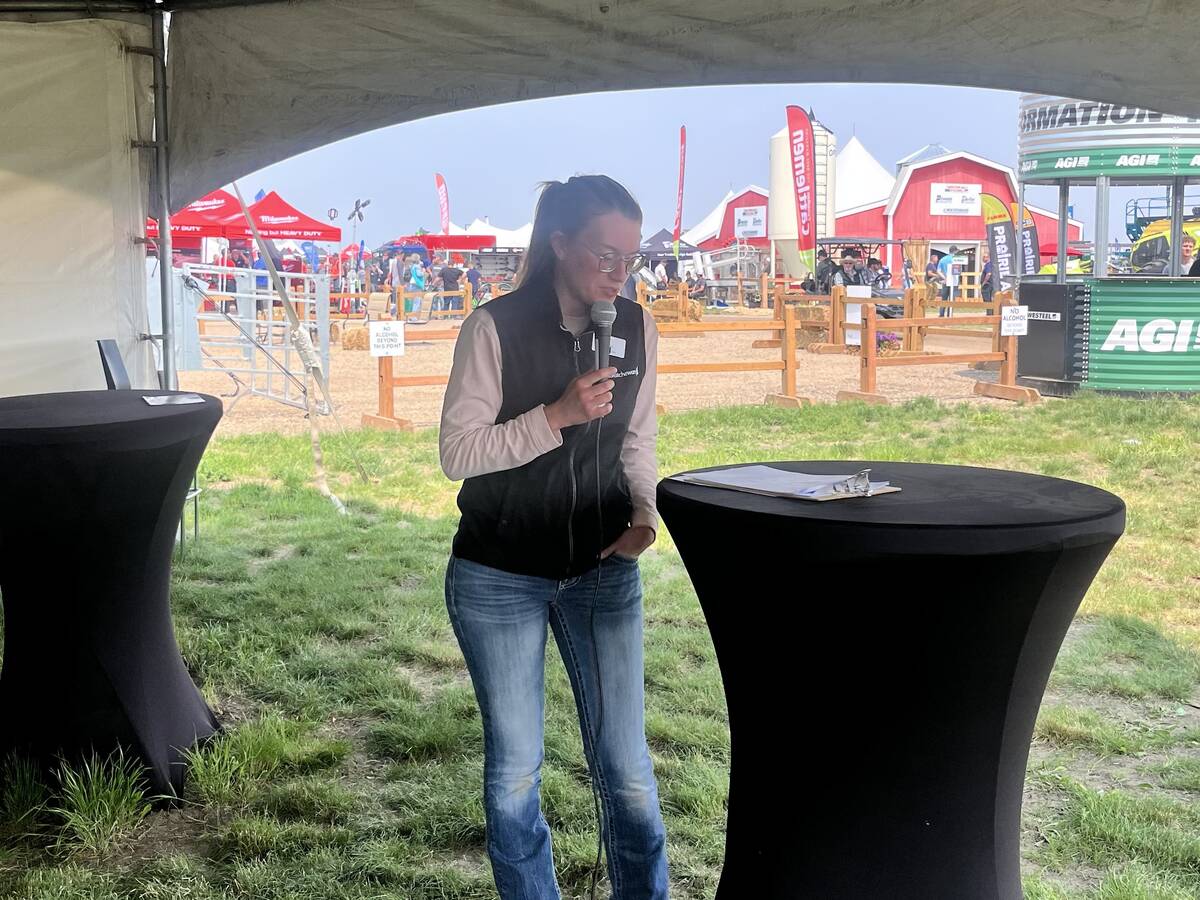When Allan Preston stepped up to the microphone to introduce the next speaker at a mid-November meeting in Brandon, he hesitated a moment, looked down at his notes and then said something off the cuff.
Preston, who was Manitoba’s chief veterinary officer and the province’s assistant deputy minister of agriculture and is now a rancher near Hamiota, Man., said he’s met a lot of people with remarkable job histories, but Ron Davidson’s resume might be the most impressive he’s ever seen.
Davidson was in Brandon to speak about the state of Canada’s soybean industry because he is the new executive director of Soy Canada. The group represents all parts of the soy sector from producers to processors to exporters.
Read Also

Ag in Motion speaker highlights need for biosecurity on cattle operations
Ag in Motion highlights need for biosecurity on cattle farms. Government of Saskatchewan provides checklist on what you can do to make your cattle operation more biosecure.
Davidson assumed his new role at the beginning of November, replacing Jim Everson, who is now with the Canola Council of Canada.
Like Preston, Soy Canada board members also noticed Davidson’s impressive resume and his more than 40 years in agriculture and diplomacy.
“Ron has a tremendous understanding of domestic and international regulatory environments and their impact on agriculture policy in Canada,” said Soy Canada chair Mark Huston.
Davidson spent 15 years of his career at five embassies around the globe, including Japan, France, Brazil and the United States.
During his time in Washington, he worked on negotiations for the North American Free Trade Agreement.
He also served as Canada’s ambassador to Saudi Arabia, Oman, Bahrain and Yemen.
As well, he was with Agriculture Canada for 20 years, where he worked on international market development, served as the Canadian Wheat Board liaison in Ottawa for two years and most recently was vice-president of trade and public affairs with the Canadian Meat Council.
Davidson, now in his 60s, grew up on a dairy farm in Ontario and graduated from McGill University with a degree in agriculture.
His new job at Soy Canada is a reminder of his youth at the family farm near Ottawa.
“Back in those days, the early 1970s, soybeans were just moving into that area. They were a new crop,” he said in an interview.
“Today I live south of Ottawa. When I drive home I drive through corn and soybean fields.”
Davidson wasn’t planning to leave the meat council, and he didn’t seek out the position with Soy Canada.
Someone suggested he should submit a resume, so he did. Once he learned more about the ambitious goals of Soy Canada, it was difficult to say no to the opportunity.
“Working in an industry that aspires to grow and expand and has clearly the ability to do it, is really enticing…. It just seemed to fit,” Davidson said.
“The aspirations and expectations of the soybean industry in Canada (is) to double production in 10 years.”
If the soy industry is going to double production, almost all the acreage growth will occur in Western Canada.
Farmers in Manitoba and Saskatchewan seeded around 3.1 million acres of beans this year. Soy proponents hope that number reaches five million in the near future.
However, more acres and more production will require more buyers for the additional beans. Davidson hopes to play a role in securing new markets for Canadian soybeans.
“I spent a lot time over the years, in Canada and abroad, working on market access issues,” said David-son, who was at ease during an interview with the media, even though he was only 12 days into his new role with Soy Canada.
“We need approval abroad of the maximum residue levels for our crop protection products. We need approval abroad of the traits being bred into the soybeans…. Market access is hugely critical.”
Soybean production in Canada has almost doubled from 2010 to 2017, thanks to an acreage boom in Manitoba and Saskatchewan.
National soy acres were 7.3 million in 2017, so topping 10 million would require an additional three million, with most of those gains coming in Saskatchewan.
“The more soybeans that are produced in Canada the easier it is to justify the research and innovation (investment),” Davidson said.
“The bigger it (the industry) is to compete with the Americans and South Americans, the better it is for everybody.”
However, even at 10 million acres, Canada would remain a small player in the global soybean trade. The United States had 89.5 million acres this year and Brazil had 84 million acres last year.
Canada needs to stand out from those massive competitors. One way might be food grade soybeans, which are used to make food such as miso soup and tofu.
“In that area Canada actually has an advantage because we have the best identify preserved system for food grade soybeans in the world,” said Davidson.
His enthusiasm might be related to switching jobs and roles many times during his career.
His longest stint was six years with the meat council, followed by five years at the Canadian embassy in Tokyo.
“I’ve done a lot of different things,” Davidson said.
“I never really left jobs intentionally. It’s just that other things came along.”

















